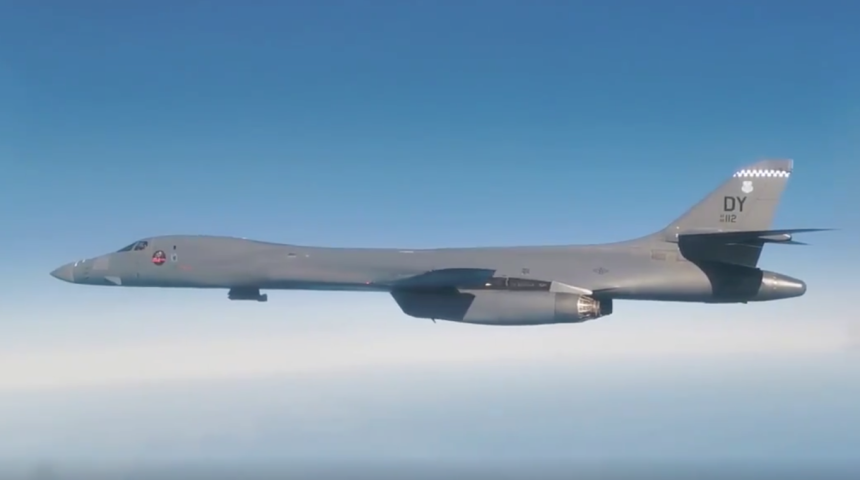Russian MiG-31s and Su-35S escorted a B-1B “BONE” from Dyess Air Force Base, flying in international airspace over the Northern Pacific Ocean, as it “approached” Russia’s airspace.
On Sept. 15, 2020, the Russian MoD released the news and video about the intercept of a B-1B Lancer bomber flying in the airspace over the waters of the Bering and Okhotsk seas. The U.S. strategic bomber was detected as an “air target approaching the state border of the Russian Federation” and was intercepted “to identify it and prevent violations of the state border”.
Two MiG-31 Foxhound interceptors from the Pacific fleet were scrambled to intercept, identify and escort the “Bone” (as the B-1 is normally dubbed in the pilot community) that was later also escorted by at least one Su-35S of the Eastern Military District.
Noteworthy, the footage released by the Russian MoD shows that the B-1 flying the quite unusual sortie over the Bering Sea (another similar mission was flown in the same area in April this year), is one of the Lancers assigned to the 7th Bomb Wing at Dyess Air Force Base in Abilene, Texas, and not one of the four B-1s from the 34th Expeditionary Bomb Squadron, 28th Bomb Wing, Ellsworth AFB, South Dakota, deployed to Guam since Sept. 11, 2020.
Guess who’s baaaaaack!? 🦴🦴
Four B-1s from Ellsworth AFB have arrived at Andersen AFB for a Bomber Task Force deployment. Some of the B-1s integrated with the @JASDF_PAO in the Sea of Japan prior to landing.
Article: https://t.co/WXClsaCPfO pic.twitter.com/kVUTVb9h4Z
— PACAF (@PACAF) September 11, 2020
Dyess’s B-1s show of force over Arctic’s East Siberian Sea
U.S. Air Force Reserve B-1 Lancer bombers from Dyess AFB have operated in the same region last days. On Sept. 11, three B-1s of the 345th BS landed at Eielson Air Force Base near Fairbanks, Alaska, after a 14-hour mission that saw them fly from Texas to the international airspace over the East Siberian Sea, into the easternmost section of the USEUCOM area of responsibility. This was a U.S. European Command (USEUCOM) planned and led Bomber Task Force (BTF) mission flown in preparation for another long-scheduled deployment to Europe.
“The three Lancers, assigned to the 345th Bomb Squadron at Dyess Air Force Base in Abilene, Texas, demonstrated how U.S. strategic bombers are able to support any mission, anywhere around the globe at a moment’s notice. The mission, which complemented the deployment of six B-52s to RAF Fairford in England, showcased how U.S.-based assets can be employed to achieve an operational objective on USEUCOM’s eastern and western flanks,” said the official USEUCOM press release.
“This continuous 14-hour, 4,300 nautical-mile mission also marked the first time a European BTF mission was supported by a U.S. Air Force Reserve B-1 Lancer unit, thereby advancing total force integration efforts.”
While the video of the MiG-31 intercept on the Dyess AFB B-1 was released on Sept. 15, it’s not clear when the “close encounter” took place. Moreover, the news mentions only one B-1 (and not three, as in the 14-hour mission). Therefore, while we can’t rule out the clip was filmed on Sept. 10-11, it’s also possible that one of three bombers (the one in the video, #86-0112, that was also depicted on the ground at Eielson) carried out another mission across the Bering Sea later, on Sept. 14 and 15.
Anyway, the news of latest B-1 missions in the Pacific region come as the four B-52s deployed to Europe continue to carry out third mission to another hotspot: the Black Sea. After flying conducting sorties over Ukraine and near Crimea on Aug. 28 and Sept. 4, the BUFFs flew again in the region on Sept. 14, 2020.









